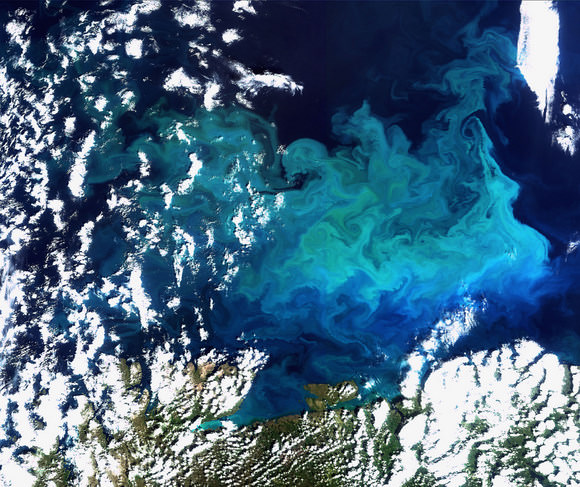[/caption]
What a gorgeous shot of our blue planet! This Envisat satellite image taken on August 19, 2009 captures a plankton bloom larger than the country of Greece stretching across the Barents Sea off the tip of northern Europe. The land visible across the bottom of the image belongs to Norway (left) and Russia’s Murmansk Oblast.
Plankton, the most abundant type of life found in the ocean, are microscopic marine plants that drift on or near the surface of the sea. Microscopic plankton have been called ‘the grass of the sea’ because they are the basic food on which all other marine life depends.
The colorful blossoming bloom in the Barents Sea, a rather deep shelf sea with an average depth around 230 m, is approximately 136,000 sq km. In comparison, Greece has a land area of 131,940 sq km.
For more about this image, see this page from ESA.


We need a sort of transatlantic ready reckoner, don’t we: ‘larger than Greece’ = ‘larger than Louisiana’ (thank you, Wikipedia list of states by area), ‘bigger than Jupiter’ = ‘almost as large as Texas’, and so on.
I suppose it’s too much to ask press officers to use the universal language of numbers.
I think 136,000 sq km is a number, no?
Thats a whole lot of Whale Food!!!
@tomster, yes, I believe you’re correct. Maybe some of the posters here should read the entire article before commenting…Beautiful image Nancy!
ooh… you used the correct russian term for the murmansk region. nicely done.
Or an area of +/- 84,506 square miles… Biomass tonage estimates anyone?
The bloom is related to a seasonal upwelling event, right? It would be very interesting to see the same area during previous blooms. Data mining anyone?